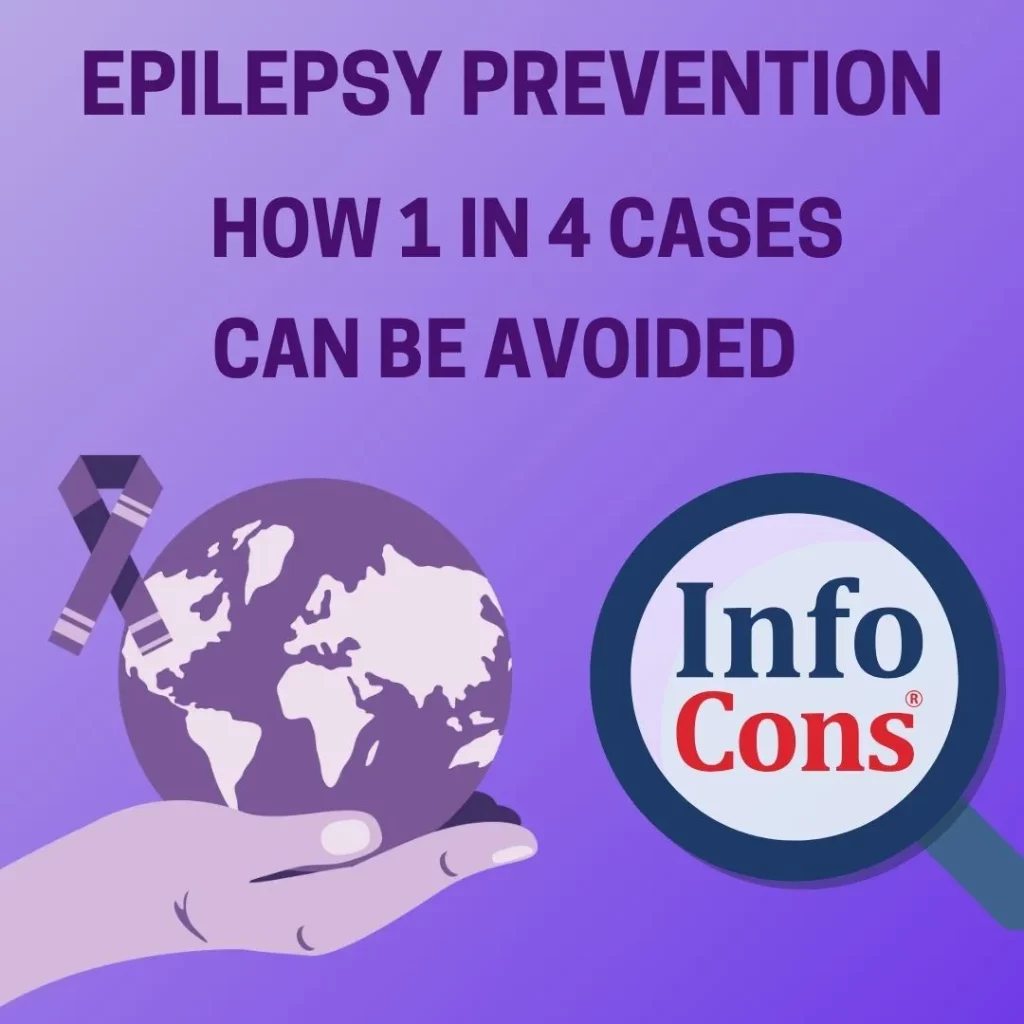
Epilepsy is a prevalent and often misunderstood neurological condition that affects millions worldwide. Defined by recurrent seizures, epilepsy manifests in various ways, ranging from brief lapses in attention or sudden, involuntary muscle movements to severe, prolonged convulsions that can be life-threatening. Despite its widespread occurrence, public awareness about the condition and its prevention remains limited.
What many people don’t realize is that 1 in 4 cases of epilepsy can actually be prevented, offering hope and a tangible way to reduce its global impact. In this article, we’ll explore what epilepsy is, who it affects, and the simple yet powerful steps that can help prevent it.
What Is Epilepsy? Understanding the Basics
Epilepsy is one of the most common neurological disorders in the world. It is characterized by abnormal brain activity that results in seizures—sudden surges of electrical activity in the brain. These seizures vary greatly in severity and form.
- Mild Seizures: Some individuals experience brief lapses in attention or small, uncontrolled muscle movements that might go unnoticed.
- Severe Seizures: Others may endure intense, prolonged convulsions that can significantly impact their quality of life and pose serious health risks.
Epilepsy is a condition that anyone can develop at any age, regardless of gender, race, or ethnicity. Importantly, epilepsy is not contagious, and in most cases, it is manageable with the right medical care and lifestyle adjustments.
Read also : Avian Influenza : Risks , Prevention , and What to Know
The Preventable Side of Epilepsy: 1 in 4 Cases Can Be Avoided
A surprising fact about epilepsy is that 25% of cases can be prevented through simple yet effective measures. Prevention plays a critical role in reducing the burden of this disorder, especially in regions with limited access to healthcare. Here are some of the key prevention strategies:
- Get Vaccinated
Vaccination is one of the most effective ways to prevent infections that can lead to epilepsy. Diseases such as meningitis and encephalitis are known risk factors for epilepsy, and vaccines can drastically reduce the likelihood of these conditions.
- Practice Good Hygiene
Infections like neurocysticercosis—a condition caused by tapeworm larvae in the brain—are a common cause of epilepsy in certain parts of the world. Following good hygiene practices, such as washing hands, consuming clean water, and cooking food thoroughly, can help prevent these infections.
- Ensure Safe Childbirth Practices
Birth injuries are a leading cause of epilepsy in infants. Ensuring the presence of a trained birth attendant during childbirth can minimize complications like oxygen deprivation, which may lead to neurological damage and epilepsy.
- Wear a Helmet While Riding Bikes or Scooters
Traumatic brain injuries are a significant risk factor for developing epilepsy. Wearing a properly fitted helmet while riding a bike, motorcycle, or scooter can drastically reduce the risk of head injuries and, consequently, epilepsy.
Read also : Best Practices for Collecting , Handling , and Treating Lithium Batteries – 2025 Industry Guide
Who Is at Risk for Epilepsy?
Epilepsy can develop in people of all ages, but certain factors may increase the risk:
- Infants and Children: Birth complications or infections during childhood can lead to epilepsy.
- Older Adults: Neurological conditions like stroke or Alzheimer’s disease may trigger epilepsy in later life.
- Individuals With Head Injuries: Trauma to the brain caused by accidents is a common cause of epilepsy.
Understanding these risk factors is essential for recognizing and addressing epilepsy early.
How Epilepsy Impacts Lives
Living with epilepsy can pose unique challenges, from managing seizures to addressing stigma and misconceptions. With proper medical care, such as anti-seizure medications, and support from communities, individuals with epilepsy can lead fulfilling lives.
However, prevention is always better than treatment. Taking steps to reduce preventable cases can not only improve individual health outcomes but also alleviate the broader healthcare burden of epilepsy worldwide.
Read also : EU E-Commerce Imports : New Regulations to Ensure Safety & Sustainability
Small Steps Can Lead to Big Changes
Epilepsy is a condition that touches the lives of millions, yet 1 in 4 cases can be avoided with proactive measures. From vaccinations and good hygiene to safe childbirth practices and wearing helmets, these simple steps can have a profound impact on reducing epilepsy’s prevalence.
Raising awareness about the preventable nature of epilepsy is crucial. By understanding the risk factors and taking preventive action, we can collectively work toward a world with fewer epilepsy cases and improved quality of life for those affected.
Source : World Health Organization
InfoCons – European Organization for Consumer Protection and Promotion of Programs and Strategies , a full member of the World Organization Consumers International , founding member of the Federation of Consumer Associations , and member of ANEC .